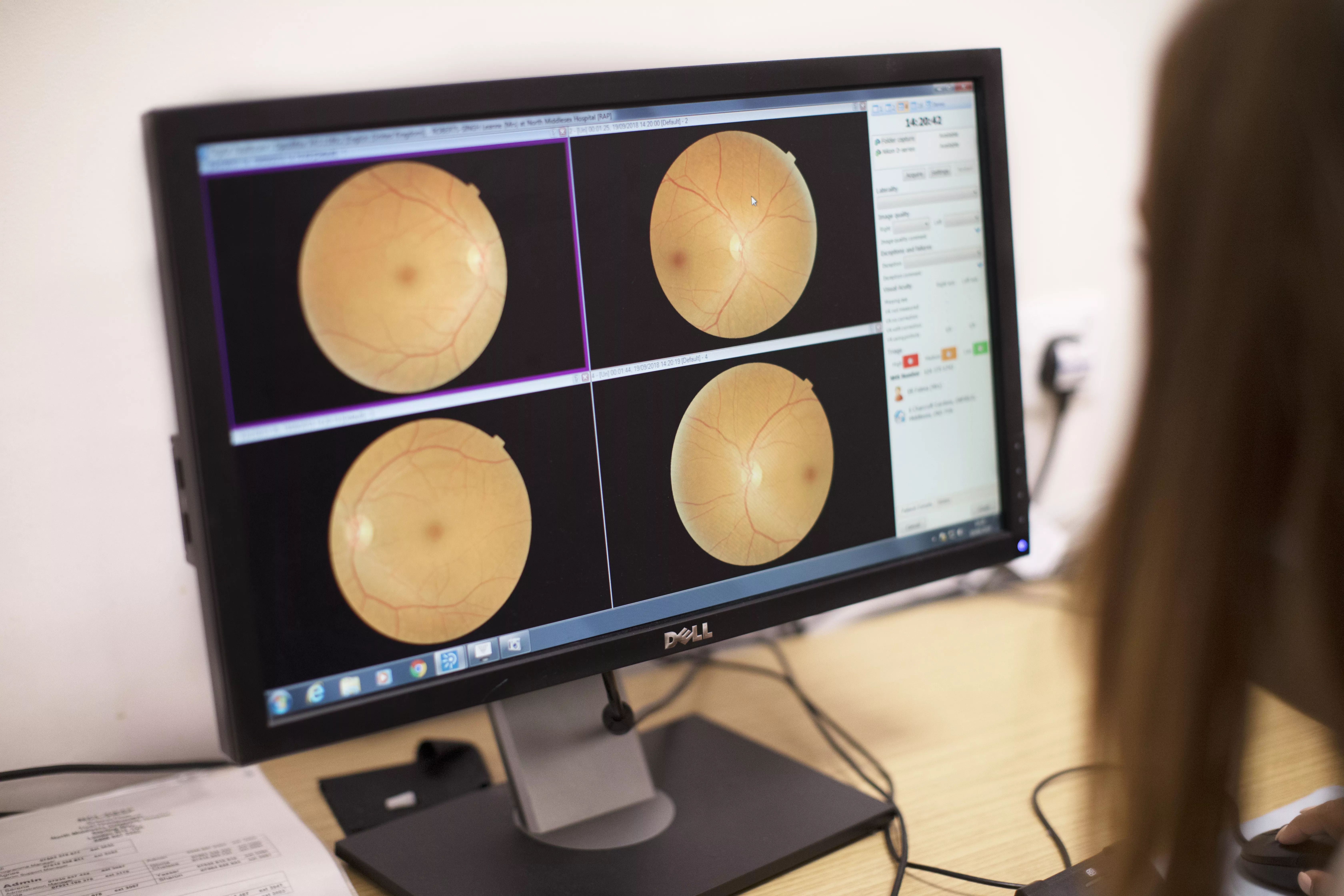
New research we fund by a PhD student may improve how we identify who is at risk of diabetic retinopathy, which could help to prevent life-changing loss of vision.
Our research may improve how we identify who is at risk of diabetic retinopathy.
Diabetic retinopathy is one of the leading causes of vision loss in working-age adults. It occurs when high levels of sugar in the blood cause damage to the blood vessels in the retina, meaning that the retina can’t get the oxygen and nutrients needed to work properly. There are treatments that can help slow the progression of diabetic retinopathy, but it’s crucial that it’s diagnosed as early as possible, to prevent damage before it occurs.
A new study, published in Diabetologia, by our funded PhD student Dr Rachel Bedenis Forster looked at the shapes of blood vessels in the eyes of 1066 people living with type 2 diabetes, as part of the Edinburgh Type 2 Diabetes Study, to see if there was a link with the risk of developing diabetic retinopathy.
At the beginning of the study, the researchers took photographs of people’s retinas and measured how curvy and branched the blood vessels in their eyes were. The participants were then followed for 10 years to see who had developed retinopathy. Dr Bedenis Forster found that increased curvature in the retinal veins (the blood vessels that return blood to the heart) was linked to a higher risk of developing diabetic retinopathy. Higher risk was also found to be linked to reduced amount of branching of the blood vessels.
Dr Forster then showed that this data can improve the accuracy of a tool we currently use to predict someone’s risk of developing diabetic retinopathy, using information like blood pressure, HbA1c levels and age. In the future, this could help us identify more people who are at risk of developing diabetic retinopathy so that they can get the support and treatment they need to protect their vision before damage occurs.
Dr Bedenis Forster said:
“This work from the Edinburgh Type 2 Diabetes Study indicates that there may be a relationship between very small changes in the blood vessels of the eye and the chances of developing diabetic retinopathy. This could hopefully allow us to identify those who are more likely to develop retinopathy and allow for earlier treatment. Future research needs to focus on understanding if this relationship exists in other groups of people with type 2 diabetes and determine how best to utilise different software programmes that can measure these vessel changes.”
Anna Morris, our Assistant Director of Research, said:
“This new research is a promising step towards helping to protect people living with diabetes from loss of vision and highlights the need for further research in this area. Diabetes is serious, but early identification of those who might be more likely to develop complications like diabetic retinopathy, means we can take extra measures to protect their sight.
“Improving the quality of care for people living with all types of diabetes is a key component of our five-year strategy, and projects like Dr Bedenis Forster’s help make sure that people are offered the right treatments for them, at the right time. We look forward to seeing how this new knowledge might make a difference in the future.”
